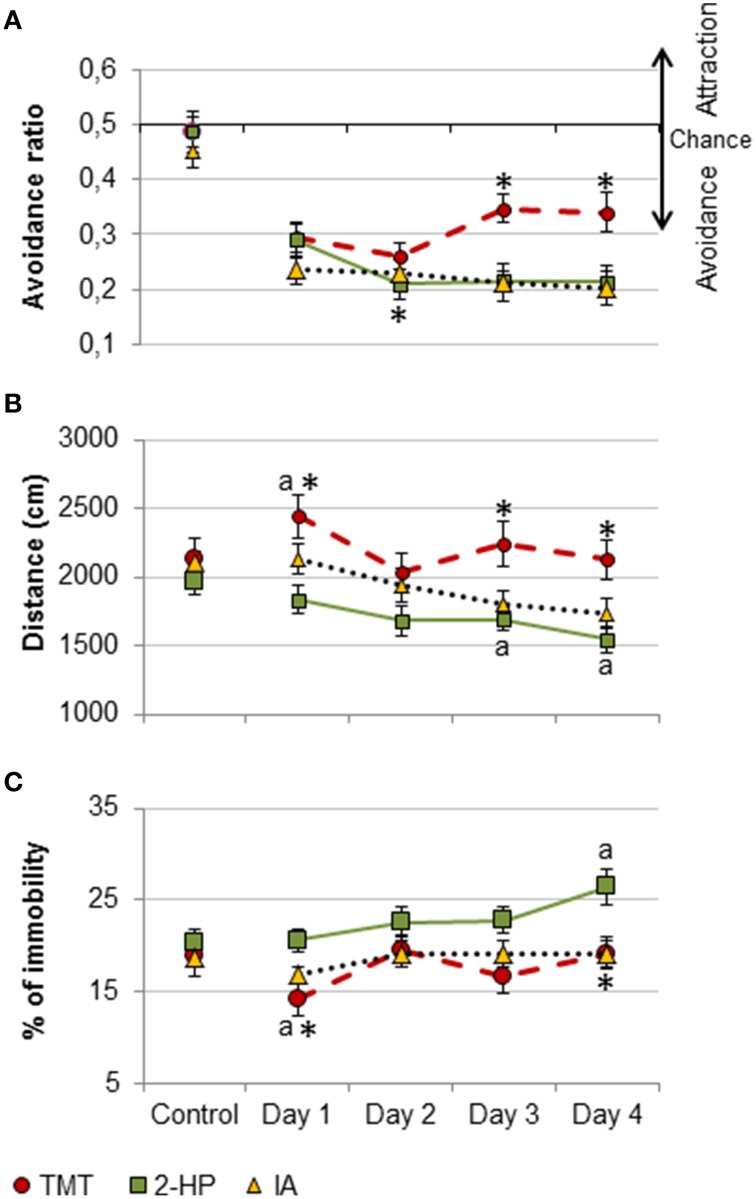Figure 4.
Pure TMT, 2-HP and IA were avoided and differently affected locomotion. Line charts representing behavioral responses during the training days of the contextual conditioning experiment for each odorant. All three odors were significantly avoided, but the avoidance of TMT was blunted across sessions, whereas avoidance of 2-HP increased in the second day (A). Distance traveled was differentially affected by the three odors: whereas TMT increased locomotion during the first exposure day and then this parameter remained stable, 2-HP and IA decreased locomotion across tests (B). TMT reduced immobility the first training day, and 2-HP increased it during the last training day, whereas IA did not affect to this measure (C). Comparison between odorants: *p < 0.05. Comparison between exposure days and the control situation: a, p < 0.05. Data are expressed as mean ± SEM.

